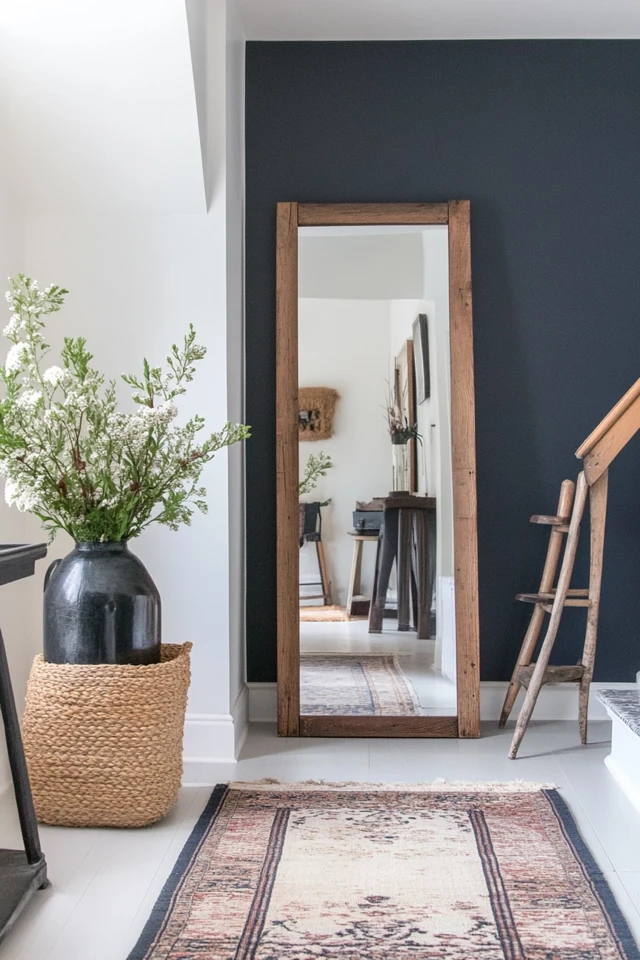Introduction
Designing narrow spaces is one of the most challenging yet rewarding aspects of interior design. Narrow spaces often feel limiting, and the idea of incorporating large furniture or decor might seem impossible without creating clutter. But with the right techniques, you can seamlessly integrate large items into these tighter areas, making them functional, stylish, and uncluttered.
I once worked with a client who wanted to fit a substantial bookcase into their narrow hallway to create a reading nook. At first, it felt like an impossible task—every design attempt seemed to make the hallway look cramped. However, by selecting a slim, floor-to-ceiling bookcase and pairing it with subtle, space-saving seating, the space was transformed into a cozy, purposeful corner. The bookcase didn’t overpower the hallway but became a feature, giving the area depth and character.
In this guide, I’ll walk you through strategies to fit large items into narrow spaces without making them feel cluttered or overwhelming. Whether it’s a long hallway, a compact entryway, or a slender bedroom, these tips will help you turn your narrow areas into functional, beautiful spaces.
The Perfect Design for You
This approach is ideal for anyone who:
- Wants to maximize narrow spaces while maintaining functionality and style.
- Needs to incorporate large furniture or decor items into tight layouts.
- Struggles with creating balance in small or slender areas.
- Wants to optimize their space without sacrificing a clean, uncluttered look.
Imagine a narrow dining area with a sleek, extendable dining table that doesn’t overwhelm the room or a compact bedroom with a tall wardrobe that maximizes vertical space. These designs demonstrate how large items, when thoughtfully placed, can complement narrow spaces rather than dominate them.
No matter your space limitations, these tips will help you transform even the narrowest of rooms into areas that are both functional and aesthetically pleasing.
Picture Gallery
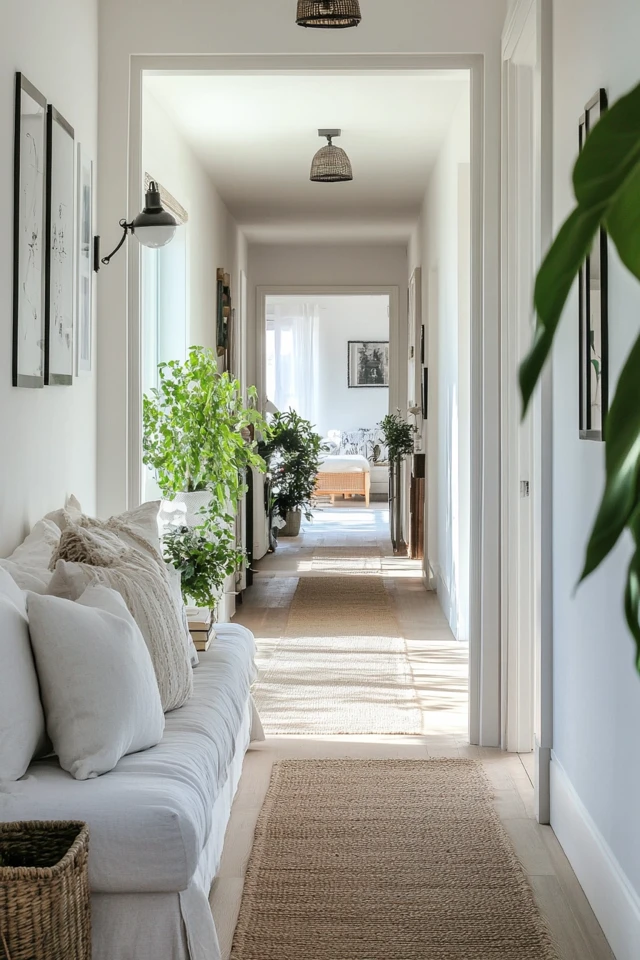
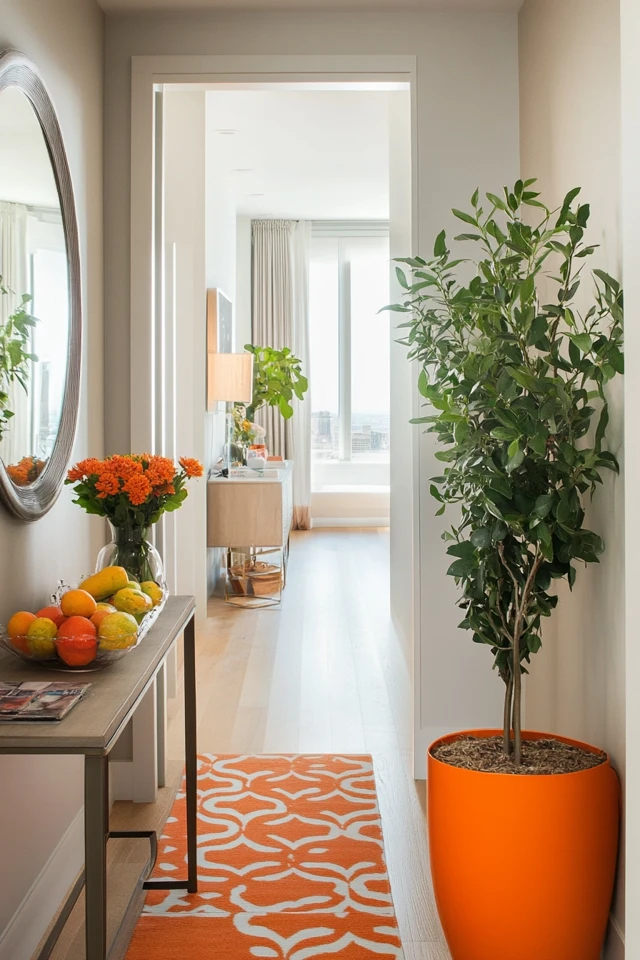
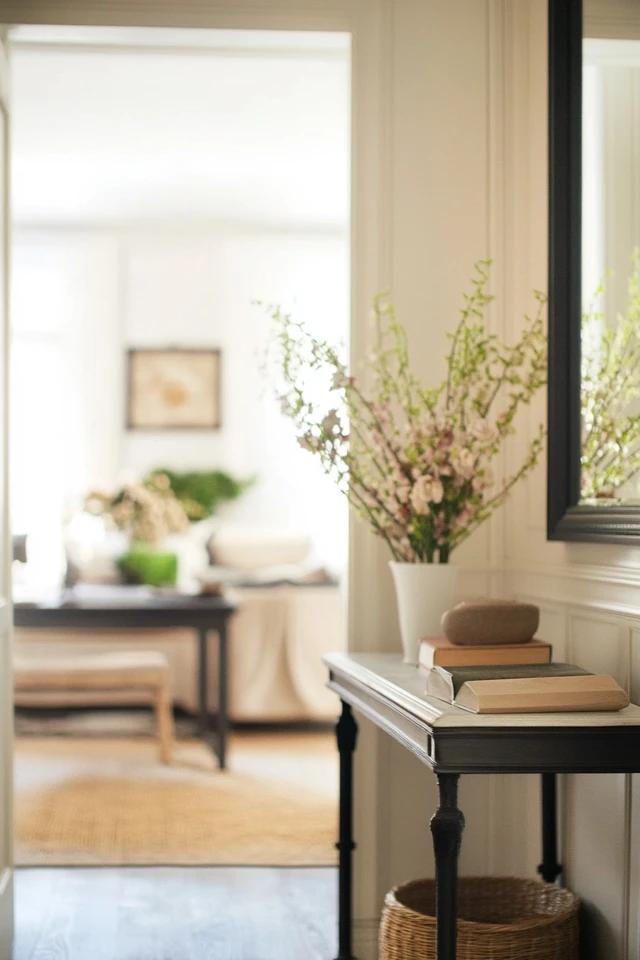
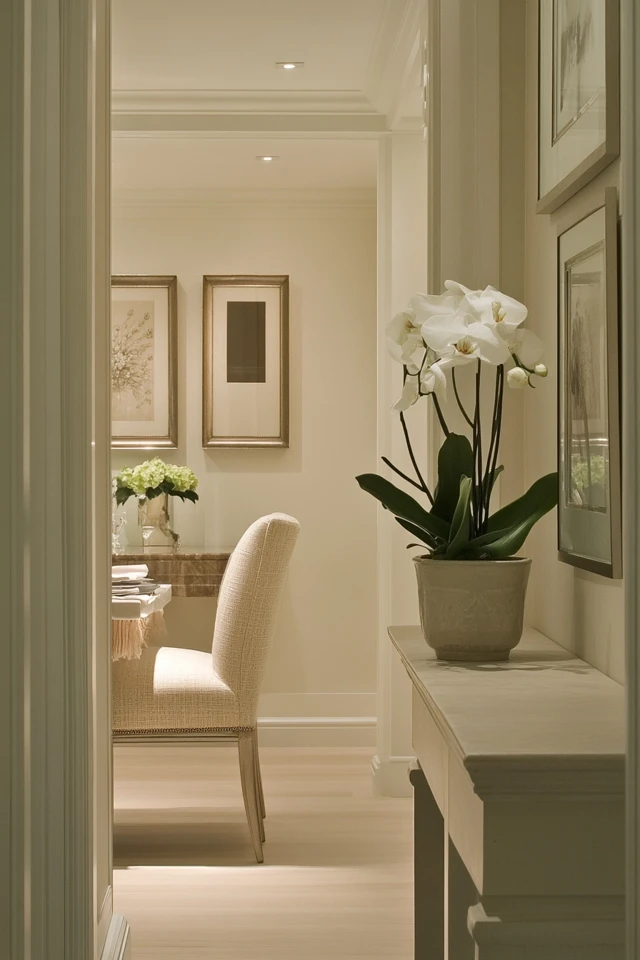


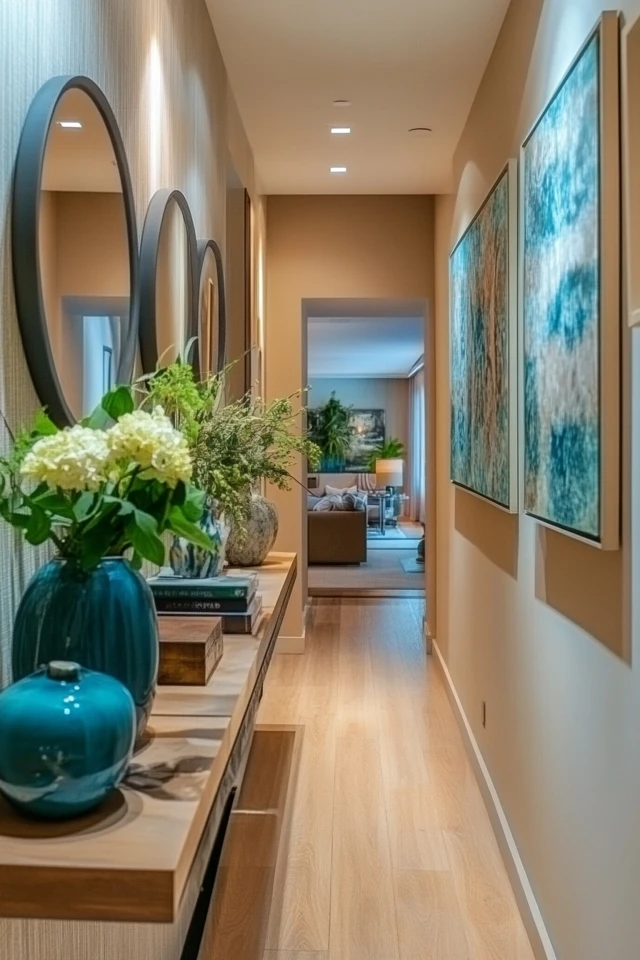
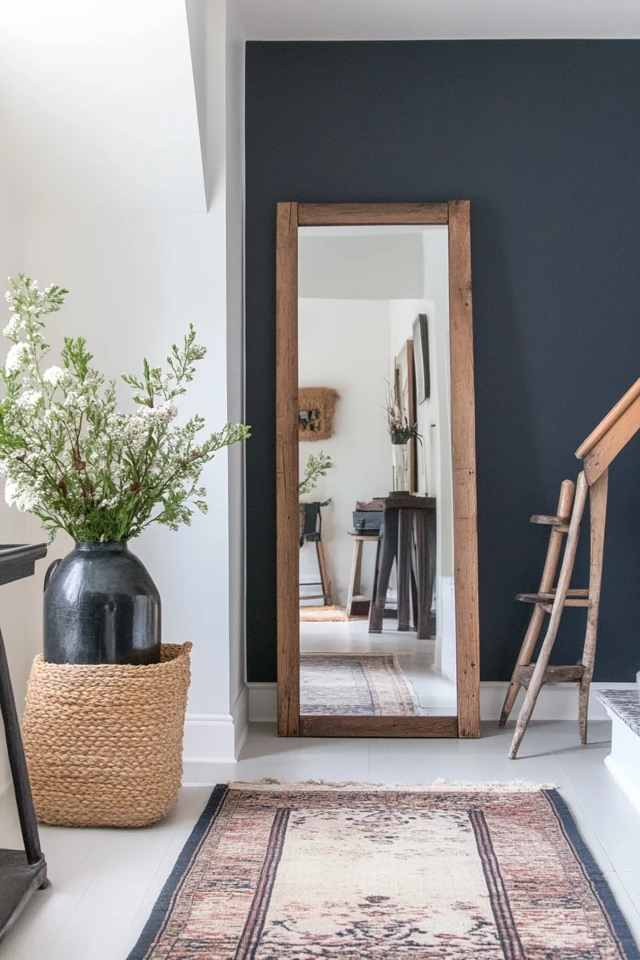
Why Large Items Work in Narrow Spaces
While it may seem counterintuitive, large items can actually enhance narrow spaces when used strategically. Here’s why this approach works:
- Maximizes Vertical Space: Tall furniture and decor draw the eye upward, making narrow spaces feel more open.
- Reduces Visual Clutter: A single large piece often feels cleaner and more cohesive than multiple smaller items.
- Adds Functionality: Large items like storage units or multifunctional furniture make the most of limited square footage.
- Creates a Focal Point: A well-placed large item anchors the space, giving it purpose and balance.
- Enhances Perception of Space: Thoughtful placement of large items can create the illusion of a wider or longer area.
By choosing the right large pieces and integrating them into your design with care, you can create a narrow space that feels purposeful and uncluttered.
How to Fit Large Items Into Narrow Spaces Without Clutter: Step-by-Step
1. Choose Slim, Vertical Pieces
- Opt for tall, narrow furniture to maximize storage without consuming floor space:
- Look for bookcases, cabinets, or wardrobes that are slim but extend vertically.
- Use modular furniture that can adapt to the height and layout of your space.
- Vertical pieces create a sense of height, making the area feel more spacious.
- Example: In a narrow entryway, use a tall shoe cabinet instead of a low, wide bench to save floor space while increasing storage.
2. Use Multifunctional Furniture
- Incorporate furniture that serves multiple purposes to reduce the number of items in the space:
- Use extendable dining tables, storage ottomans, or fold-down desks.
- Opt for beds or sofas with built-in storage compartments.
- Multifunctional furniture eliminates the need for additional pieces, keeping the space tidy.
- Example: In a narrow bedroom, choose a bed with under-bed drawers to replace a bulky dresser.
3. Position Large Items Along Walls
- Place large furniture flush against the walls to free up central walkways:
- Avoid leaving unnecessary gaps behind furniture to maximize usable space.
- Use wall-mounted units for storage or display purposes.
- This approach ensures the narrow space remains functional and easy to navigate.
- Example: In a long hallway, install a slim, wall-mounted console table that doesn’t encroach on walking space.
4. Opt for Light Colors and Reflective Surfaces
- Use light-colored furniture and decor to prevent the space from feeling heavy or closed-in:
- Incorporate mirrors, glass surfaces, or high-gloss finishes to reflect light and create an illusion of openness.
- Stick to a neutral or monochromatic color palette to reduce visual clutter.
- Reflective surfaces amplify natural light, making the room feel larger.
- Example: In a narrow living room, place a tall, mirrored cabinet against one wall to add depth and brightness.
5. Anchor the Space With a Statement Piece
- Use one large, bold item as the focal point of the room:
- Choose a piece like a dramatic painting, a sculptural lamp, or a large piece of furniture.
- Keep surrounding decor minimal to maintain balance and avoid clutter.
- A statement piece draws attention and creates a sense of purpose.
- Example: In a narrow dining area, use an oversized pendant light above the table to create a visual anchor.
6. Incorporate Built-Ins for Seamless Integration
- Use built-in furniture to save space and create a streamlined look:
- Install built-in shelving, benches, or wardrobes to blend with the architecture.
- Opt for recessed cabinets or niches to minimize protrusions.
- Built-ins maximize storage while keeping the design clean and cohesive.
- Example: In a narrow bedroom, install a built-in wardrobe that stretches from floor to ceiling without taking up extra space.
7. Leave Negative Space for Balance
- Avoid overcrowding the room by leaving open spaces around large items:
- Use negative space to frame furniture, giving the room room to breathe.
- Place furniture in a way that allows for clear pathways and functional flow.
- Negative space enhances the overall balance and prevents visual overload.
- Example: In a narrow home office, position a large desk against one wall and keep the opposite side of the room open for movement.
8. Use Floating or Wall-Mounted Furniture
- Opt for furniture that doesn’t touch the floor to create a sense of openness:
- Use wall-mounted desks, shelves, or vanities to free up floor space.
- Choose floating cabinets or benches to maintain a clean, airy feel.
- Floating furniture reduces bulk and keeps narrow spaces feeling light.
- Example: In a narrow bathroom, install a floating vanity with built-in storage to maximize functionality without crowding the floor.
9. Arrange Furniture to Guide the Eye
- Use furniture placement to create the illusion of width or length:
- Position large items parallel to the longest wall to elongate the space.
- Avoid blocking sightlines with furniture that’s too tall or bulky.
- Strategic placement enhances the room’s proportions.
- Example: In a narrow living room, place a large sectional sofa along one wall and use a low-profile coffee table to keep the area open.
10. Incorporate Vertical Decor for Balance
- Add vertical elements to complement large furniture and enhance the space’s proportions:
- Use tall plants, floor lamps, or hanging artwork to draw the eye upward.
- Install vertical paneling or curtains that stretch to the ceiling.
- Vertical decor adds balance and prevents the space from feeling crowded.
- Example: In a narrow hallway, hang a tall, narrow mirror to create the illusion of height and reflect light.
FAQ
1. Can I use large furniture in very small spaces?
Yes! Focus on slim, tall, or multifunctional pieces that maximize functionality while minimizing visual bulk.
2. How do I avoid making a narrow space feel cramped?
Stick to light colors, reflective surfaces, and minimal decor. Leave negative space around furniture to keep the area feeling open.
3. How do I deal with narrow spaces with limited natural light?
Use mirrors, glass furniture, and light-colored pieces to brighten the space. Incorporate soft lighting to enhance the ambiance.
4. What’s the best way to balance large items in a narrow room?
Pair large furniture with smaller accents, like lamps or decor, to create balance. Leave open pathways to maintain functionality.
5. Can I use bold colors in a narrow space with large items?
Yes, but limit bold colors to one or two statement pieces. Use neutrals for the rest of the decor to avoid overwhelming the room.
Variations
- Modern Minimalism: Use sleek, monochromatic furniture with clean lines to create a spacious feel.
- Rustic Charm: Opt for natural wood furniture with a slim, vertical profile to add warmth and character.
- Industrial Edge: Use metal and glass furniture with a streamlined design for a bold, functional look.
- Bohemian Flair: Incorporate lightweight, textured furniture with vibrant accents for a playful yet balanced aesthetic.
- Traditional Elegance: Use tall, ornate pieces in light colors to add sophistication without heaviness.
How to Showcase It
- Living Rooms: Use a large sectional sofa or tall bookcase as the centerpiece, paired with minimal accents.
- Bedrooms: Incorporate a tall wardrobe or bed with built-in storage to save space and maintain functionality.
- Dining Areas: Choose an extendable dining table with slim chairs to fit the narrow layout.
- Hallways: Install a tall, narrow console table or built-in shelves to add purpose without clutter.
- Home Offices: Use a wall-mounted desk and a vertical storage unit to maximize workspace.
Occasions to Feature It
- Everyday Living: Use space-saving solutions to create functional, clutter-free areas for daily activities.
- Small Apartments: Maximize narrow spaces with large yet purposeful furniture to maintain comfort and style.
- Renovations: Incorporate built-ins and multifunctional pieces during remodeling to optimize layout.
- Hosting Guests: Create open, inviting spaces by strategically placing large items that don’t disrupt flow.
- Seasonal Decor: Rotate large statement pieces or accents to reflect seasonal changes without overcrowding.
Conclusion
Fitting large items into narrow spaces doesn’t have to mean sacrificing functionality or aesthetics. With the right strategies—like using vertical pieces, multifunctional furniture, and thoughtful placement—you can make even the tightest layouts feel open, purposeful, and uncluttered.
Whether you’re redesigning a small apartment, a narrow hallway, or a compact bedroom, these tips will help you maximize your space without compromising style. Embrace the challenge of working with narrow spaces and transform them into practical, beautiful areas that enhance your home!

